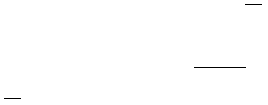
66
basic ridge characteristics, such as the ten that have been identified by the examiner in the case
at bar. The answer to that question is plainly no. As discussed above, many countries require
that there be at least 12 - 30 matching ridge characteristics before fingerprint evidence is deemed
sufficiently reliable so as to warrant its admission at a criminal trial.
Moreover, in this country, no relevant scientific community, beyond fingerprint
examiners themselves, generally accept that latent fingerprint identifications are reliable. As
courts have recognized, in defining a relevant scientific community, it is necessary to look
beyond the practitioners of the technique that is under assessment.See, People v. Leahy, 8 Cal.
4th at 609(“Consistent with both the weight of authority and the cautious, ‘conservative’ nature of
Kelly, we conclude that testimony by police officers regarding the mere administration of the test
is insufficient to meet the general acceptance standard required by Kelly”). See also, Williamson
v. Reynolds, 904 F.Supp. 1529, 1558 (E.D. Okl. 1995) (“Not even the ‘general acceptance’
standard is met, since any ‘general acceptance’ seems to be among hair experts who are
generally technicians testifying for the prosecution, not scientists who can objectively evaluate
such evidence.”); United States v. Starzecpyzel, 880 F. Supp. 1027, 1038 (S.D.N.Y. 1995)
(“[Forensic Document Examiners] certainly find general acceptance within their own
community, but this community is devoid of financially disinterested parties, such as
academics.”).
Except for scientists in the field of biometrics, who have questioned the reliability of
fingerprint identification even of computer scanned prints, other mainstream scientists have
essentially ignored the question of whether individuals can be reliably identified through latent
fingerprint impressions. Saks, supra, at 1081 . And as discussed above, the forensic science
experts that have examined the issue, have found the fingerprint field to be scientifically
deficient. See Saks, supra, at 1106 (“A vote to admit fingerprints is a rejection of conventional
science as a criterion for admission.”); David L. Faigman et al., Fingerprint Identification: Legal
Issues, in Modern Scientific Evidence: The Law and Science of Expert Testimony §21-1.0, at 55

67
(West 1997) (“[B]y conventional scientific standards, any serious search for evidence of the
validity of fingerprint identification is likely to be disappointing.”); Stoney, Fingerprint
Identification, supra, §21-2.3.1, at 72 (Ex. 15) (“[T]here is no justification [for fingerprint
identifications] based on conventional science: no theoretical model, statistics or an empirical
validation process.”). Accordingly, the factor of general acceptance by impartial experts outside
the fingerprint profession weighs heavily in favor of Mr. Nawi’s motion to exclude the
government’s fingerprint evidence.
7.
The Fingerprint Literature Confirms the Scientific Bankruptcy of the Field
Prominent fingerprint experts themselves, such as the California Department of Justice’s
Dusty Clark, have made it clear that they do not accept the precepts and teachings of David
Asbaugh. See, Dusty Clark, What’s The Point (Dec. 1999) supra (“The repeatability of the finite
detail that is utilized in the comparison process has never been subjected to a definitive study to
demonstrate that what is visible is actually a true 3rd level detail or an anomaly...There has to be
something to measure and count if the comparison process includes ‘quantitative’. If the analysts
do not quantify their analysis then their opinion of identity is strictly subjective. A subjective
analysis without quantification makes the identification process as reliable as astrology...
Ridgeology hasn't been scientifically proven to be repeatable, and it's application is not
standardized.”)
Astoundingly, even Ashbaugh himself has declared that “ (i)t is becoming more apparent
as time passes that friction ridge identification science is more vulnerable now than at any time
in its history...[T]he Daubert hearing in the U.S. federal court in Philadelphia, PA, will continue
to unfold over the next few years. The future will habor many similar challenges.”Ashbaugh,
Basic and Advanced Ridgeology, supra, at 6-7.
The source of this pessimism by one of the profession’s leading advocates is easy to
trace. The fundamental premises underlying latent print identifications have not been critically
examined in the technical literature of the fingerprint community. As Mr. Ashbaugh has stated

68
“it is difficult to comprehend that a complete scientific review of friction ridge identification has
not taken place at sometime during the last one hundred years[;] [a] situation seems to have
developed where this science grew through default.” (Id. at4.)
The truth of Mr. Ashbaugh’s
comments can be seen by an examination of the publications that are typically listed as
authoritative sources on the “science” of fingerprinting. While some of the titles typically listed
might convey the impression of science, a review of their actual contents will readily reveal
otherwise. Take for example the FBI publication The Science of Fingerprints(1979). Only three
pages of this 211 page text even concern the subject of latent fingerprint comparisons. The rest
of the text is primarily concerned with classifying ten print patterns, recording ten print patterns
and the lifting of latent prints. As to the three pages that concern latent fingerprint comparisons,
there is no discussion whatsoever as to the fundamental premises that underlie latent print
identifications or even how such comparisons should be conducted. As Mr. Ashbaugh has
correctly recognized “ (l)ittle, if anything, has been reported on the importance and need for
scientific knowledge, understanding the evaluative proces, or the training necessary to be able to
analyze,compare, and evaluate friction ridge prints.” Id. at 5.
Even when the premises of latent print identifications have been considered in the
technical literature, they have not been critically examined. A perfect example is Alan
McRobert’s article Nature Never Repeats, The Print 12(5), Sept/Oct`96, pp 1-2.
In this article, Mr. McRoberts cites with approval the following statement which was originally
made by Wilder and Wentworth in their 1916 text, Personal Identification:
Finally, there is never the slightest doubt of the impossibility of the
duplication of a fingerprint, or even of the small part of one, on the
part of anyone who has carefully studied the subject at first hand,
whether finger-print expert or anatomist: the only doubters are
those who have never taken the trouble to look for themselves, and
who argue from the basis of their own prejudices and preconceived
opinions.

69
It is probably statements such as these that have led government expert David Ashbaugh
to bemoan the “failure of the identification community to challenge or hold meaningful debate.”
Ashbaugh, Basic and Advanced Ridgeology, supra, at 4. As Mr. Ashbaugh explains:
In the past the friction ridge identifications science has been akin
to a divine following. Challenges were considered heresy and
challengers frequently were accused of chipping at the foundation
of the science unnecessarily. This cultish demeanor was fostered
by a general deficiency of scientific knowledge, understanding and
self confidence within the ranks of identification specialists. A
pervading fear developed in which any negative aspect voiced,
which did not support the concept of an exact and infallible
science, could lead to its destruction and the credibility of those
supporting it.
(Id.).
Thus, while the phrase “Nature never repeats itself” is catchy, it is not, to paraphrase
former Justice Potter Stewart, a tailsman in whose presence the protections of Kelly disappear. It
is generally held that no two snowflakes are exactly the same. But see, N.C. Knight, No Two
Alike? 69 Bulletin Am. Meteorological Soc’y 496 (1988)(finding “ apparent contradiction of the
long-accepted truism that no two snow crystals are alike.”). As Dr. John Thornton observes,
“ (b)ased on the same type of not very rigorous observation, it is held that no two fingerprints
have ever been found to have the same ridge positioning....Obsevations such as these have
gradually become tenets of the beliefs of the forensic scientist of the uniqueness of all objects. In
some quarters, these tenets have been scooped up and extended into a single all-encompassing,
generalized principle of uniqueness, which states that ‘Nature never repeats itself.” John
Thornton, The General Assumptions and Rationale Of Forensic Identification, in 2 Modern
Scientific Evidence: The Law and Science of Expert Testimony § 20-4.2, p. 11-12. Yet, as Dr.
Thornton argues, the principle is false as applied to fingerprint evidence or any other kind of
physical evidence:
The principle is probably true, although it would not seem susceptible of rigorous
proof. But the general principle cannot be substituted for a systematic and
thorough investigation of a physical evidence category. One may posit that no two
snowflakes are alike, but it does not immediately follow that no two shoes are
alike, since snowflakes are made in clouds and shoes are not. If no two shoes are
70
alike, the basis for this uniqueness must rest on other grounds, and those grounds
must be identified and enuniciated. (Id.)
In sum, the literature of latent fingerprint examiners “fails to meet the expectations of the
Daubert (and Kelly) Court(s) -- that a competitive, unbiased community of practitioners and
academics would generate increasingly valid science.” United States v. Starzecpyzel, 880 F.
Supp. 1027, 1037 (S.D.N.Y. 1995).
8.
Latent Fingerprint Identifications Are Analogous to Other Techniques
That Courts Have Found Scientifically Unreliable
Latent fingerprint comparisons are analogous to two other long standing forensic
identification techniques that, in the wake of Daubert, have been found scientifically deficient;
these techniques are hair comparisons and handwriting analysis. As indicated above, citing
Daubert or Kumho Tire, several recent federal cases have held that handwriting comparison
(United States v. Santillan (N.D. Cal. 1999) __F.Supp.__,1999 WL 1201765; United States v.
Hines (D. Mass. 1999) 55 Supp. 62;United States v. McVeigh, 1997 WL 47724
(D.Colo.Trans.Feb. 5, 1997); United States v. Starzecpyzel (S.D.N.Y. 1995) 880 F. Supp. 1027,
1038 and hair comparison (See Williamson v. Reynolds (E.D. Okla. 1995) 904 F. Supp. 1529,
1558, rev’d on other grounds (10th Cir. 1997) 110 F. 3d 1523), are no longer supported by
current scientific research.And in an analogy even closer to the context of fingerprints, the
Washington Court of Appeals has recently reversed an aggravated murder conviction because
the state did not establish that latent earprint identification was generally accepted in the forensic
science community, as required for admissibility under the Frye test. State v. Kunze (1999)
97 Wash.App. 832, 988 P.2d 977.
Like latent fingerprint identifications, the fundamental premises of handwriting analysis
are that no two people write alike and that forensic document examiners can reliably determine
authorship of a particular document by comparing the document with known samples.
Starzecpyzel, 880 F. Supp. at 1031. As with fingerprints, however, these premises have not been

71
tested. Id. at 1037. Nor has an error rate for forensic document examiners been established.
Id. As the court in Starzecpyzel recognized, while “an unknown rate does not necessarily imply
a large error rate . . . . if testing is possible, it must be conducted if forensic document
examination is to carry the imprimatur of ‘science.’” Id. The parallel between the handwriting
and fingerprint fields extends to the issue of objective standards. As in the fingerprint field,
forensic document examiners do not have any numerical standards to govern their analysis. Id.
at 1032. And, like the fingerprint community, forensic document examiners have not subjected
themselves to “critical self-examination” in their literature. Id. at 1037. For these various
reasons, the district court in Starzecpyzel concluded that “forensic document examination . . .
cannot after Daubert, be regarded as ‘scientific . . . knowledge.’” Id.
18
The courts followed
similar reasoning in Santillan, Hines and Mcveigh.
Hair analysis also is analogous to latent fingerprint comparisons. Like latent print
examiners, hair analysts look for a number of matching characteristics in doing hair
comparisons. Williamson v. Reynolds, 904 F. Supp. at 1553 (“Hett testified that there are
approximately 25 characteristics used in hair comparisons.”). Hair analysts then state whether
the hair found at the crime scene is consistent microscopically with the hair of the defendant.
19
Id. As with fingerprints, there has been a “scarcity of scientific studies regarding the reliability
of hair comparison testing.” Id. at 1556. And, like fingerprints, “there is no research to indicate
with any certainty the probabilities that two different hair samples are from the same individual.”
Id. at 1558. Accordingly, as with fingerprints, the “evaluation of hair evidence remains
18
Despite reaching this conclusion, the district court in Starzecpyzel ultimately allowed
the handwriting evidence to be admitted under Federal Rule of Evidence 702 as “specialized
knowledge” rather than as “scientific knowledge.” (The court provided the jury with a lengthy
instruction explicitly telling them that the evidence was not scientific in nature). Id. at 1050-51.
In so holding, the court reasoned that the Daubert factors are inapplicable to experts who are not
testifying on the basis of scientific knowledge. Id. at 1029. This aspect of the court’s decision,
however, was ultimately shown to be erroneous by the Supreme Court’s subsequent decision in
Kumho Tire Co. v. Carmichael, 119 S. Ct. 1167 (1999).
19
Unlike latent print examiners, hair analysts candidly concede that they cannot make
absolute identifications. Williamson, 904 F. Supp. at 1554, 1555.

72
subjective, the weight the examiner gives to the presence or absence of a particular characteristic
depends upon the examiner’s subjective opinion.” Id.
at 1556. Given these various
considerations, the district court in Williamson concluded that “expert hair comparison testimony
[does not] meet any of the requirements of Daubert” and that the state trial court thus erred in
admitting it. Id. at 1558.
Latent earprint analysis is obviously closely analogous to latent fingerprint comparisons.
As explained in State v. Kunze (1999) 97 Wash.App. 832, 988 P.2d 977, the technique involved
in recovering the latent earprint in that case is identical to the procedure used in this case to
recover latent fingerprints: “[the technician] ‘dusted’ the print by applying black fingerprint
powder with a fiberglass brush. He ‘lifted’ the print by applying palm-print tape first to the door
and then to a palm-print card.” 988 P. 2d at 980. And as with the fingerprints in this case, there
was in Kunze variability in the way a known earprint is made and a lack of knowledge as to how
a latent earprint was created:
“[the technicians] knew that earprints of the same ear vary
according to the angle and rotation of the head, and also according to the degree of pressure with
which the head is pressed against the receiving surface. They did not know the angle and
rotation of the head that made the latent print, or the degree of pressure with which that head had
been pressed against McCann's door.” Id. at 981. The one distinguishing feature between the two
techniques actually marks forensic earprint analysis a more forensically conservative technique
than fingerprint analysis. Thus, while the expert in Mr. Nawi’s case proposes to render an
opinion of absolute certainty as to the identity of the latent print, the expert in Kunze tetified only
that “David Kunze is a likely source for the earprint and cheekprint which were lifted from the
outside of the bedroom door at the homicide scene." id. at.
Despite this conservative stance, the Washington Court of Appeal, after reviewing the
testimony of the 15 expert witnesses called at the Frye hearing and two letters supporting the
technique from scientists in Germany and England, concluded that forensic earprint analysis did
not meet the general acceptance test of Frye. The head of the state’ crime lab testified and based
73
on his experience of over twenty years “(h)e claimed that latent earprint identification is
generally accepted in the scientific community, reasoning that ‘the earprint is just another form
of impression evidence,’ and that other ‘impression evidence is generally accepted in the
scientific community.’” Id at 982. The court rejected this testimony because “he had not seen any
data or studies on earprints, or on ‘how often an ear having the general shape of the questioned
print in this case appears in the general human population...” Id. at 981.
The counterpart of David Asbaugh also testifed and stated that he had compared over 7000
photographs of earprints and that “he [had] published a book describing his system, which he
calls ‘earology’ or the ‘science of ear identification.’” Id. at 983. The Court was obviously
unimpressed, stating that “(h)e did not know of any published scientific studies confirming his
theory that individuals can be identified using earprints, ... he did not claim that his system was
generally accepted in the scientific community, [and his book]...contains no bibliography and no
scientific verification”. Id at 983-984. The Court also cited with approval another expert who had
stated that the book “was ‘narrative,’ not ‘reported in a scientific manner’, and ‘not subjected to
any statistical analysis.’ Id. The Court also quoted favorably yet another expert who testified that
forensic earprint analysis had not been generally accepted in the broader scientific community
because it had never been tested by scientific methodology, it had never been subjected to
scientific peer review, and it had never been shown that results can be reliably obtained in terms
of an acceptable rate of error. Id at 984. The Court concluded its opinion with these words:
We agree with and adopt the statements of a commentator who, after noting two
generally held tenets--"that no two snowflakes are exactly the same," and "that no two
fingerprints have ever been found to have the same ridge positioning"--states as
follows:
In some quarters, these tenets have been scooped up and extended
into a single, all- encompassing, generalized principle of uniqueness,
which states that "Nature never repeats itself."
This principle is probably true, although it would not seem
susceptible of rigorous proof. But the general principle cannot be
substituted for a systematic and thorough investigation of a physical
evidence category. One may posit that no two snowflakes are alike,
but it does not immediately follow that no two shoe soles are alike,
since snowflakes are made in clouds and shoes are not. If no two
shoe soles are alike, the basis for this uniqueness must rest on other
grounds, and those grounds must be identified and enunciated.

74
Id. at 992, quoting John Thornton, The General Assumptions and Rationale Of Forensic
Identification, in 2 Modern Scientific Evidence: The Law and Science of Expert Testimony §
20-4.2, p. 11-12.
These case are sending the powerful message that, in the words of Judge Jensen,
“the[legal] world has changed” and that “ a past history of admissibility does not relieve this
Court of the responsibility of now conducting [Kelly] analysis as to ... proffered expert
testimony.” United States v. Santillan (N.D. Cal. 1999) __F.Supp. __,1999 WL 1201765 at p.
4. Just by the standards set forth in these cases, it is clear that the subjective and arbitrary
technique used n this case to identify partial latent prints with absolute certainty is neither
forensically reliable nor generally accepted within the broader community of scientists.
9.
Latent Fingerprint Comparisons Have Not Been Put to Any Non-Judicial
Applications
There have been no non-judicial applications of latent fingerprint comparisons. As
expert David Ashbaugh has recognized, the use of fingerprints has been “under the control of
the police community rather than the scientific community” and latent prints are used by law
enforcement solely as a “tool for solving crime.” Ashbaugh, Basic and Advanced Ridgeology,
supra, at 4 .
As indicated above, to the extent that non-latent prints have been employed in such fields
as biometrics, the experience is anything but helpful to establishing the reliability and general
acceptance of partial latent print comparisons. In biometrics,a clear fingerprint image is
generated, usually by a high resolution digital camera behind a Plexiglas plate where the users
presents their finger. Adrian Dysart, Biometrics (Winter 1998),
http://www.monkey.org/~adysart/598/. Even with this high-tech method of collecting the
print, it is generally recognized that “ fingerprint verification systems are subject to a mimicry
attack... (that) can be avoid(ed) (only) by having thermal sensors detect subcutaneous blood
vessels and reject the sample if none are found”. Id. More significantly, it is generally

75
recognized that “biometrics are not reliable enough on their own to act as identifiers, but in
conjunction with other, more traditional forms of access control, such as passphrases and PINs,
they provide a considerable layer of security.” See also, Let Your Fingers Do the Logging In,
Network Computing, Issue 910, June 1, 1998 (“Unfortunately, some of the lowest-cost systems
are simply gadgets and too gimmicky for consideration in the enterprise. In our review of
fingerprint recognition devices in this issue, we found much of the current crop too insecure
and unreliable for practical enterprisewide
deployment.”)http://www.techweb.com/se/directlink.cgi?NWC19980601S0021. Thus, this
factor also favors Mr. Nawi’s motion to exclude latent fingerprint evidence.
In sum, having considered the various indicators of scientific reliability set forth by the
Supreme Court in Daubert, and having surveyed the fingerprint literature produced by forensic
scientists, biometric scientists, and fingerprint technicians themselves, it is clear that latent
fingerprint comparisons do not constitute scientifically reliable and generally accepted
scientific evidence. Indeed, the picture that has emerged from this analysis is a disturbing one.
It is a picture of poorly trained law enforcement fingerprint examiners making extremely
subjective determinations in the absence of any uniform standards and in the absence of any
testing to validate the fundamental premises upon which the technique rests. It should
therefore hardly be surprising that forensic science commentators have concluded that a “vote
for science is a vote to exclude fingerprint expert opinions.” Saks, supra, at 1106
10.
A Federal Court Has Rejected Fingerprint Identification Evidence Because of its
Scientific Unreliability
Mr. Nawi began this memorandum with the observation that with one exception, the
admissibility of expert testimony based upon fingerprint evidence is well established in every
jurisdiction in the United States. In the only known instance in which a federal trial court has

76
performed the type of analysis that is now mandated by Daubert, the district court excluded the
government’s fingerprint identification evidence, finding that there was no scientific basis for
the latent print examiner’s opinion of identification. United States v. Parks (C.D. Cal. 1991)
(No. CR-91-358-JSL). (The relevant transcript pages of Parks will be provided under separate
cover).
20
The district court in Parks reached this determination after hearing from three
different fingerprint experts produced by the government in an effort to have the evidence
admitted. The testimony of these three experts, however, confirms virtually every argument
that has been advanced above.
The first fingerprint expert to testify in Parks was a Los Angeles Police Department latent
fingerprint examiner, Diana Castro. (RT at 469 -557). Ms. Castro testified that she identified
three different fingerprints at the crime scene as having between 10 and 12 points of similarity
with the known prints of the defendant. What particularly concerned the court about these
identifications was Ms. Castro’s testimony that her minimum standard for an identification is
only eight points of similarity. (RT at 538). Ms. Castro acknowledged that her standard is on
the “low side” and that other examiners require ten or twelve points or even more. (RT at
539). Ms. Castro further acknowledged that there has never been any empirical studies done to
determine if two people might have the same fingerprints. (RT at 541).
20
A review of fingerprint cases will show that no court has ever conducted the type of
analysis that is required by Daubert. Indeed, as commentators have recognized and as arued at
the outset of this memorandum, the early American cases establishing the admissibility of
fingerprint identifications involved virtually no scrutiny of the evidence whatsoever. See David
L. Faigman et al., Modern Scientific Evidence: The Law and Science of Expert Testimony § 21-
1.0, at 52 (Ex. 15) (“These cases, germinal not only for fingerprint identification but for the
many other forensic individualization techniques invested virtually no effort assessing the merits
of the proffered scientific evidence, but merely cited treatises on criminal investigation, or
general approval of science, or, . . . other cases admitting [such evidence].”); Saks, supra, at 1103
(Ex. 13) (“What is disappointing about the fingerprint admissibility cases is that these courts
made virtually no serious substantive inquiry into the body of knowledge on which they had the
responsibility to pass judgment. Later cases had the illusory luxury of precedent, reasoning in
effect: ‘Courts in other states are letting in fingerprint evidence, so we can too.’”).
77
The district court in Parks found Ms. Castro’s testimony disturbing because all the latent
print examiners that had previously testified before the court had testified to higher minimum
point thresholds. In this regard, the court stated:
This business of having a sliding scale – and this is a very high risk
business, because I’ve had a lot of fingerprinting testimony, and it’s
been from the same group of people by and large, and my
impression, correct me if you can – that it slides up and down, that if
you have only 10 points, you’re comfortable with 8, if you have 12,
you’re comfortable with 10, if you have 50, you’re comfortable with
20.
***
I’ve had them say that when they had 20 and 25, and say, “I
wouldn’t be comfortable with less than 10,” and they’ve thrown out
some that were less than 10. Whether they were less than 8, I don’t
know.
Suddenly I find that you come – being I think probably the most
junior that’s ever testified before me that I’ve ever permitted to
testify as an expert – you are comfortable with fewer than anybody
that has ever testified before me before.
And as it happens, you also have fewer than anybody that’s ever
testified before me; that makes me very uncomfortable.
(RT at 551-553).
The district court then questioned the government as to what the fingerprint treatises state
with respect to a minimum point standard. (RT at 555). The court was incredulous over Ms.
Castro’s testimony that no studies had been performed. If there are no studies the court stated,
“then this is not a science and there are no experts in it.” (RT at 556).
In response to the court’s concerns, the government called Ms. Castro’s supervisor,
Darnell Carter, to testify regarding the “standard in the industry.” (RT at 556). Mr. Carter’s
testimony, however, only succeeded in further revealing the unreliability of the evidence. Mr.
Carter disclosed to the court that while the Los Angeles Police Department has a 10 point
standard, which can slide down to 8 with a supervisor’s approval, the Los Angeles Sheriff’s
Department employs a 12 or 15 point rule and that “if there was a survey taken, you would
probably get a different number from every department that has a fingerprint section as to their
78
lowest number for a comparison.” (RT at 559-61).
21
Mr. Carter further revealed, in a
response to a direct question from the court, that there is no “literature” regarding this issue and
that he is unaware why there is no uniform rule. (RT at 561).
After hearing Mr. Carter’s testimony, the district court was only more convinced that the
fingerprint evidence should be excluded. To try to “resuscitate” the evidence, the government
called yet a third fingerprint expert, Steven Kasarsky, a board certified member of the IAI and
an employee of the United States Postal Inspection Service. (RT at 567-68, 596). The court
specifically questioned Mr. Kasarsky as to where the “science” is to support fingerprint
identifications. (RT at 576-92.) Mr. Kasarsky, however, could not provide a satisfactory
response.
Like Mr. Carter and Ms. Castro, Mr. Kasarsky testified that “everyone in our field
basically has independent standards.” (RT at 584). Mr. Kasarsky also acknowledged that
misidentifications in the field had occurred, (RT at 568-569), and, in response to a question
from the court, he admitted that no published studies regarding false identification had ever
been done. Mr. Kasarsky further admitted that he knew of instances where prints from two
different people have had ten matching characteristics and that he personally compared prints
from different individuals possessing six points of similarity. (RT at 599, 600). While Mr.
Kasarsky testified that he was able to observe a dissimilarity between these prints which
convinced him that they had been made by two different people, he admitted that on other
occasions a dissimilarity might go unseen given the partial nature of most latent prints. (RT at
600, 602). Accordingly, Mr. Kasarsky conceded that latent print examiners are in “dangerous
territory” when making identifications on the basis of only eight points of similarity:
The Court: Unless you have a very clear full print, you can’t rule out
a dissimilarity someplace on it that you didn’t have, and if you have
only five or six, or seven or eight, you’re in dangerous territory.
The Witness: Yes, Your Honor, because if you can’t see the area that
might have the dissimilarity, one can only guess.
21
Mr. Carter further testified in this regard that he had attended the FBI Academy for
training and that the lowest number that anyone from the FBI had “gone to court on has been
seven.” (RT at 561).

79
(RT at 602) (emphasis added).
After hearing Mr. Kasarsky’s testimony, the district court ruled that he would not admit
the government’s fingerprint evidence. Here is some of what the district court had to say
regarding the scientific bankruptcy of the field:
You don’t have any standards. As far as I can tell, you have no
standard. It’s just an ipse dixit. “This is unique, this is very
unusual?” “How do you know it’s unusual?” Because I never saw it
before.” Where is the standard, where is the study, where is the
statistical base that been studied?
****
I have discovered . . . that there are very limited objective standards,
and that the training in this area, if it exists, other than “I’ve done
this for a long time and I’m teaching you what I know,” is almost
nonexistent.
People that have done it teach each other. So far as I’ve heard from
you, and so far I’ve heard from anybody, those kinds of studies that
would turn this into a bona fide science simply haven’t been done.
The information is there, it could be done, but it hasn’t been done.
There has been no study about how far qualified experts with
existing prints could look at them and make a mistake on which
kinds of things. That’s something that can be done. Those prints
exist. It wouldn’t be hard for those studies to be made.
This thing could be turned into a science, but it isn’t now, not from
what you’ve said, and not from what she said, and not from what her
supervisor said.
****
Now I have heard a lot of conversation about what it takes to
become an expert in this field, and I will say, based on what I’ve
heard today, the expertise is as fragile as any group that I’ve ever
heard hold themselves out as experts.
The basis for calling themselves experts seems to me to be
very fragile. The basic premise that they don’t need expertise, that
fingerprints don’t change, doctors told them that.
The other premise that they are unique is, I think, a matter of
genetics, and also a matter not of fingerprint specialists. Those are
givens in the expertise.
The expertise that they have said that they possess, to say this
is unique, I can’t find, as I said, a common thread of analysis. It may
be there, but I haven’t heard it.
(RT at 587, 591-92, 606-07).
Unites States v. Parks thus stands as a compelling precedent for the instant motion.
Having conducted a searching inquiry for the “science” of fingerprints, the district court in
Parks properly determined that no such science exists and that the government’s fingerprint
80
evidence did not possess sufficient reliability to warrant admission. Mr. Nawi respectfully
submits that this Court should reach the same determination here.
V
THE GOVERNMENT’S FINGERPRINT IDENTIFICATION EVIDENCE SHOULD
ALSO BE EXCLUDED BECAUSE CORRECT SCIENTIFIC PROCEDURES WERE
NOT USED IN THIS CASE
As indicated above,Venegas clarified that “the Kelly test’s third prong does not apply the
Frye requirement of general acceptance -it assumes the methodology and technique in question
has already met that requirement. Instead, it inquires into the matter of whether the procedures
actually utilized in the case were in compliance with that methodology and technique, as
generally accepted by the scientific community. ...The third prong inquiry is thus case specific;
‘it cannot be satisfied by relying on a published appellate decision.’” 18 Cal 4th at 78
(emphasis added).
In People v. Farmer (1989) 47 Cal. 3d 888, 913 the Court had stated that “ careless
testing affects the weight of the evidence and not its admissibility...” However, in Venegas the
Court clearly retreated: “ Our reference to ‘careless testing affecting the weight of the evidence
and not its admissibility’ in Farmer ...was intended to characterize short-comings other than
the failure to use correct, scientifically accepted procedures such as would preclude
admissibility under the third prong of the Kelly test.“ 18 Cal. 4 th at p.80 (emphasis in
original). See also, People v. Soto (1999) 21 Cal. 4th 512, 519 (“The proponent of the evidence
must also demonstrate that correct scientific procedures were used.”)
The problem of applying Kelly’s third prong to fingerprint experts is manifest. Since, as
demonstrated above, there are no objective standards governing the profession, it is hard to
judge whether correct scientific procedures have been followed in an individual case. The
fingerprint expert’s solution to this problem is to declare that correct scientific procedure is